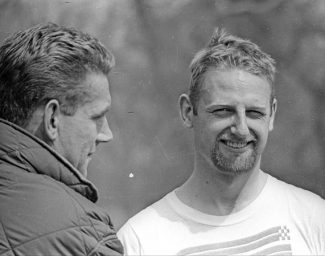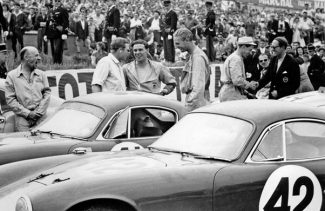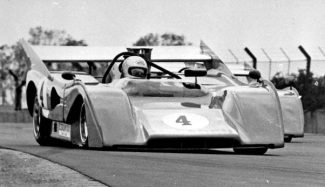There comes a time in life when you begin to see too many of your friends in the obituary columns and it was brought home again recently with the death of Sir John Whitmore, I had lost a great friend of sixty years standing.

John never raced in a Grand Prix and one got the impression he did not, unlike most other new drivers into racing, have any great ambitions. Fundamentally he took up racing because he wanted to get out from under the shadow of his father who had been born in 1872s and was 65 years old when John was born so he was brought up in a traditional Victorian aristocratic family where one dressed formally for dinner.
Both his father and mother believed in the fact that you should always seek to help other people and during WWII they worked within the community and even having homeless families staying in Orsett Hall, the family seat. For John and his sister it was tough to live up to their parents and as his father hated cars, never had a driving licence and would ride into London on his horse ! It was to get away from this life that John took up motor racing to “find himself”. He was helped by his mother who was Norwegian and understood children better than his father. Indeed it was she who loaned him her Austin A35 for his original rallies and sprints. With the help of Lotus grand prix driver Alan Stacey Colin Chapman agreed to sell one of his prototype Lotus Elites to this unknown guy to go racing and the result was spectactular.
In his fourth ever race, the support race to the Daily Express Trophy for Grand Prix cars Whitmore entered his Elite and to his surprise ended up on the front row of the grid. The other three drivers were Stirling Moss, Roy Salvadori and Colin Chapman himself. As John recalled : “ If the truth be told I actually borrowed the money to buy the Elite from my mother without my father’s knowledge and she was terrified in case I had an accident! She was Norwegian and never fully understood this form of life. She understood my urge to race and realised that psychologically I needed to get it out of my system because I was completely in the shadow of my father”.
“This Silverstone race was my first International and I found myself on the front row of the grid alongside Stirling Moss, Colin Chapman and Roy Salvadori.
“ These people were Gods to me and each of them came up to me on the grid and said, who are you? What they didn’t realise was that I didn’t know who I was anyway and I was going motor racing to find out.
“ A few days later I was working at the farm and the farm secretary told me that there was a Mr Chapman on the phone. I thought he was a seed salesman but was surprised to find it was Colin. He then asked me if I would like to drive at Le Mans and that was really the start of everything: Jim Clark and I finished 10th overall in the Elite and second in our class”
There was an amusing story he told of taking his Elite to Monza as he had a lot of young Italian friends and he wanted to show them he was now a racing driver. “In the race I was going well but going down towards the Curva Grande I saw some smoke and there was a funny smell I did not recognise. However, when I braked for the corner I realised I had no brakes and it had been brake fluid. I shot across the grass and hit the slope of the banking at the right angle and the car destroyed itself with Fibreglass flying everywhere and I ended still sitting in the seat on top of the grass bank with bits and pieces of my car all around me”.

In 1965 he was brought into Carroll Shelby’s team running in the International Championship for Manufacturers usually with Shelby Cobra Coupes. In fact the European Championship effort was run from England by Alan Mann because Ford were tied up in the GT40 International programme. Alan Mann chose John to partner the experienced Jack Sears and ran alongside Bob Bondurant and Allen Grant with two Coupes. As the Tourist Trophy Race in England Whitmore was entered in an open Shelby-Cobra and finished 4th overall with Jack Sears further back in one of the Coupes.

A year later John Whitmore retired from racing to concentrate on running the estate but his marriage was in trouble and so: ….at the end of 1968 I decided to sell the farm and move to Switzerland, so I moved away from my property and my wife at the same time; which in a sense was me running away.
I lived in Geneva alongside Jo Bonnier and Jackie Stewart and my intention was to live in Switzerland and make a lot of money but I did not fit in with that kind of Jet-set life”,
He then moved to California and the Esalen Institute which led to him pursuing probably the most productive part of his life as he became a specialist in lifestyle development and wrote two or three books about human potential and management training.
John did return to motor racing, however, but, in a sense, purely to see how his feelings and attitudes had changed. He did this in an 8.1 liter Can-Am McLaren in which he competed three times. If my memory serves me right he was third in his first race, second in the second and won the third. He then walked away from motor racing but only from a competitive point of view as he was a regular visitor to Silverstone where he could entertain a lunchtime table with a fund of stories.
Many of the members of the Grand Prix Drivers Club knew Sir John Whitmore and he was truly a man who became more famous for his theories and books on human development. But behind it all he was always a racer.
